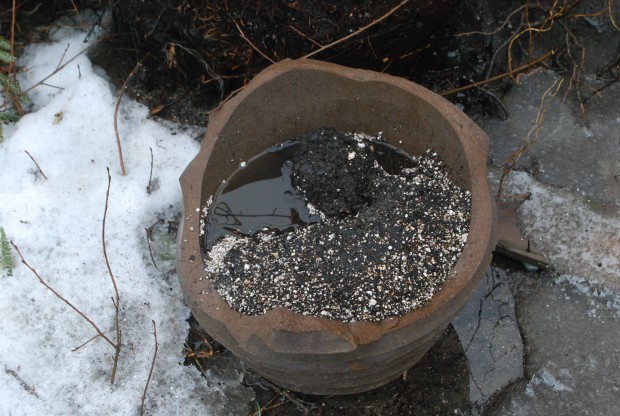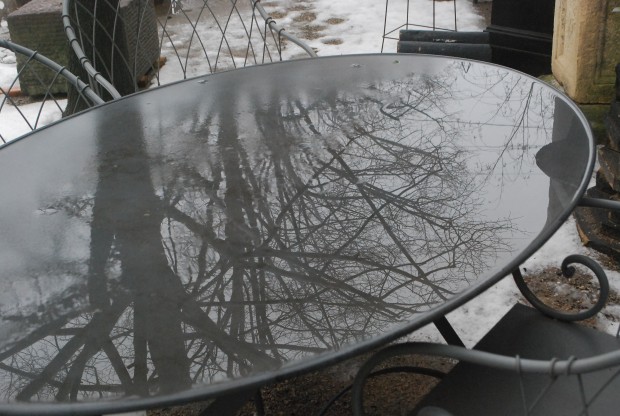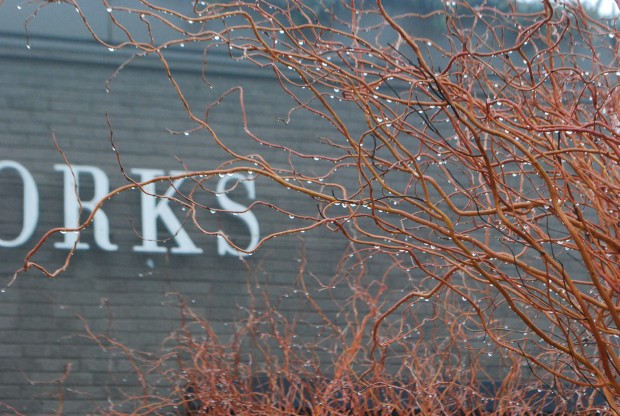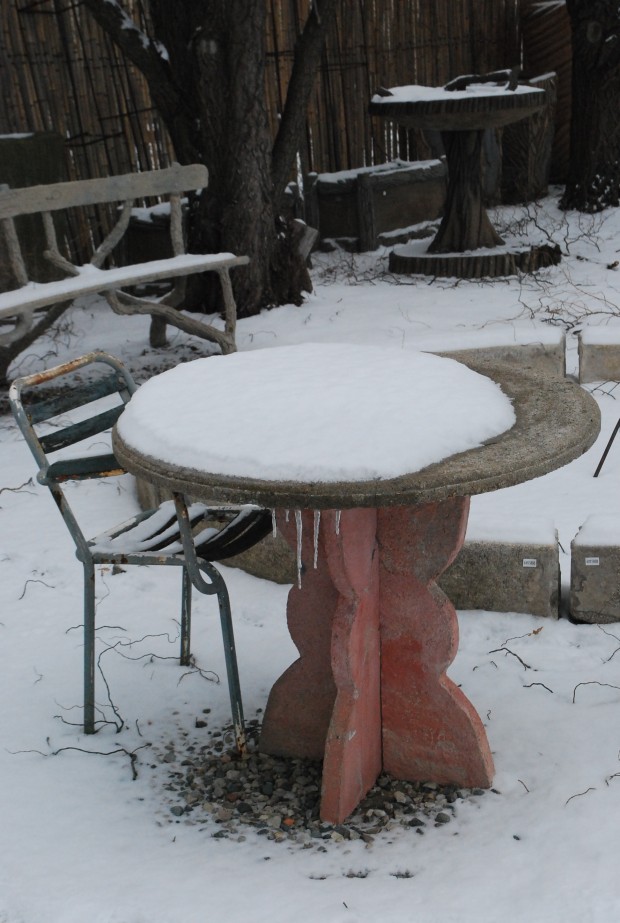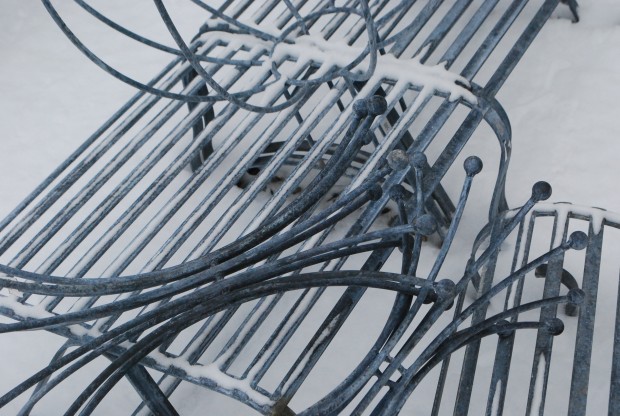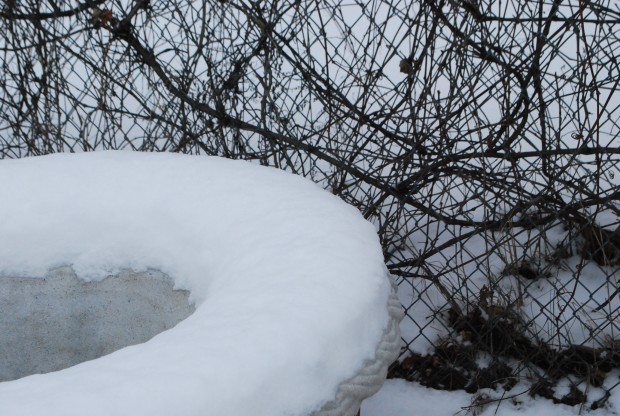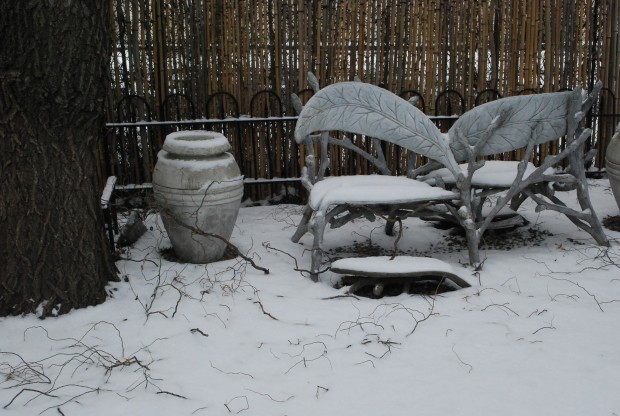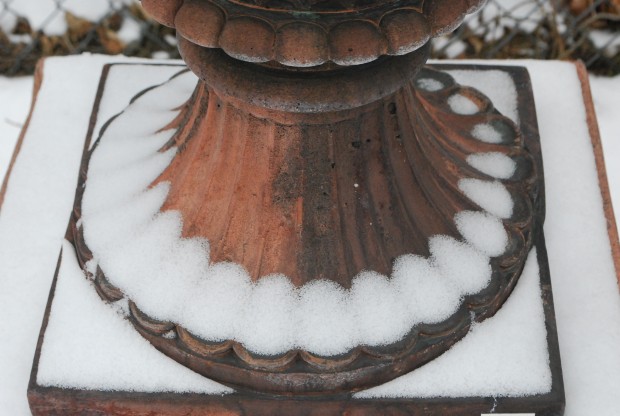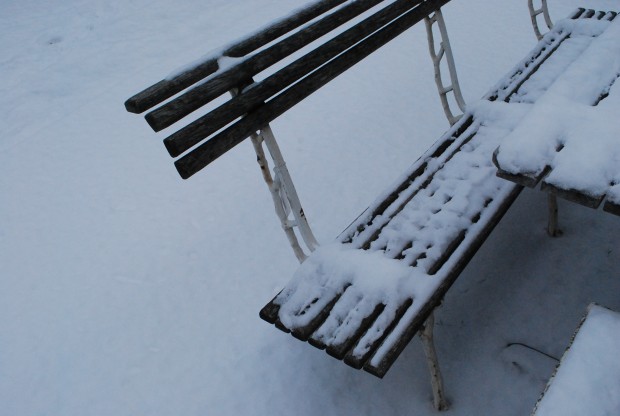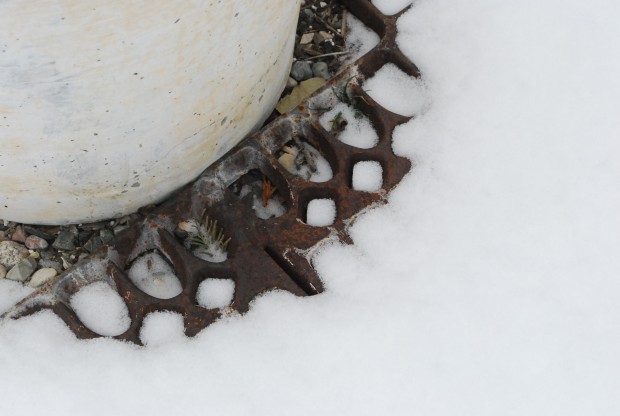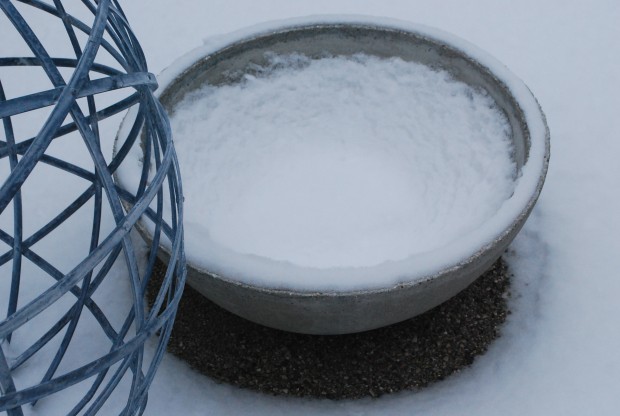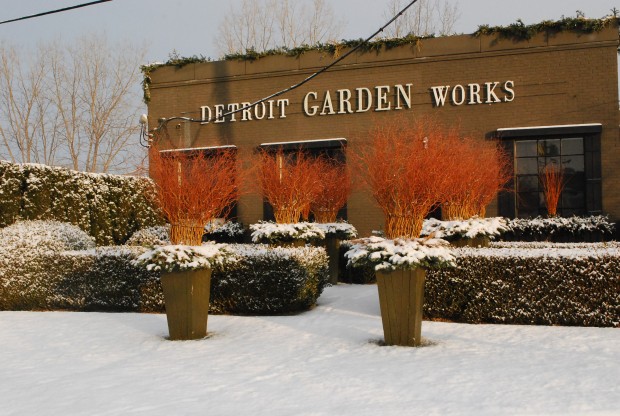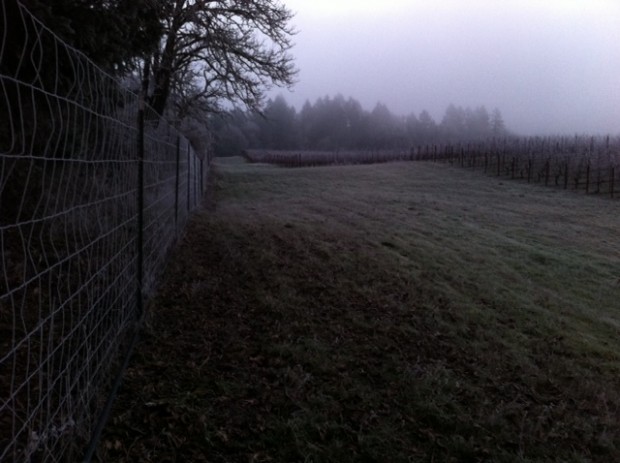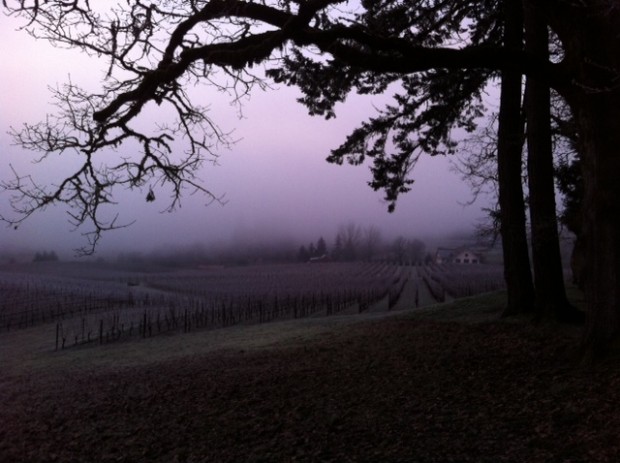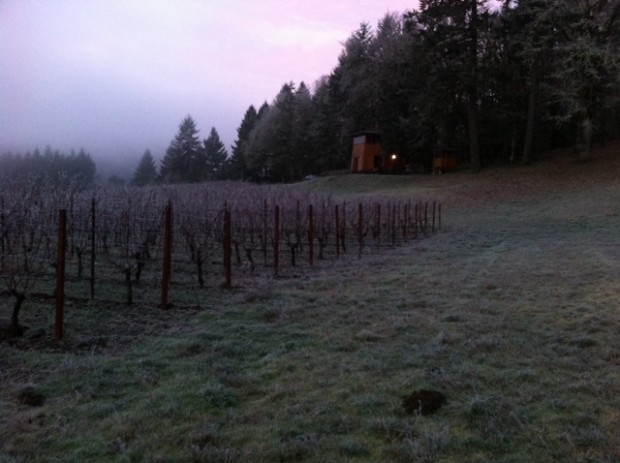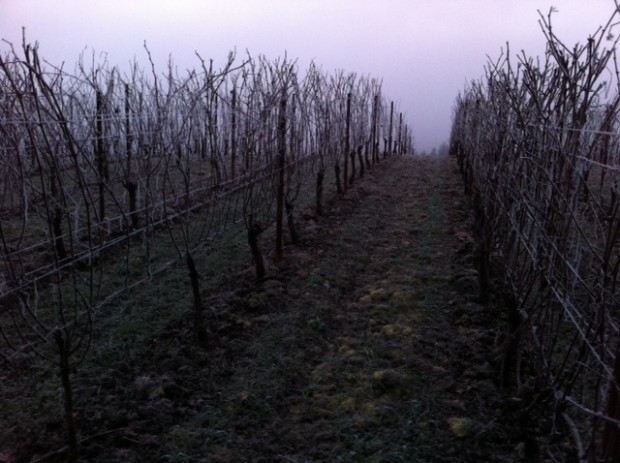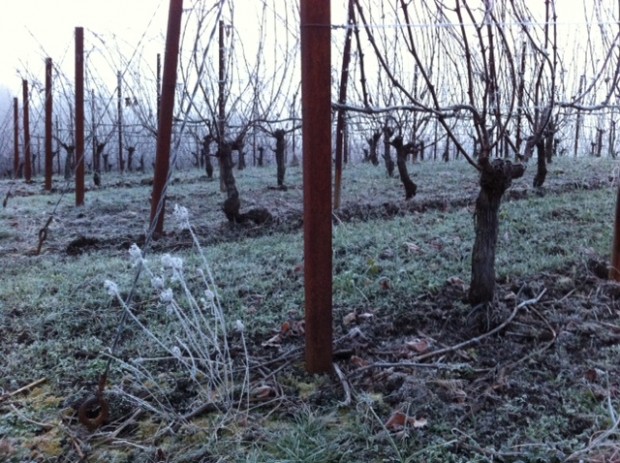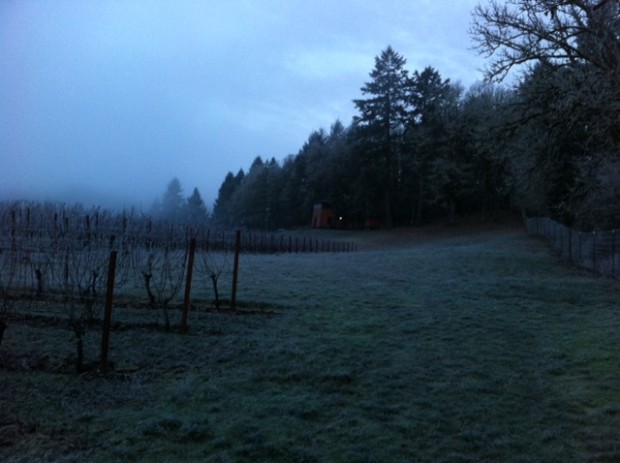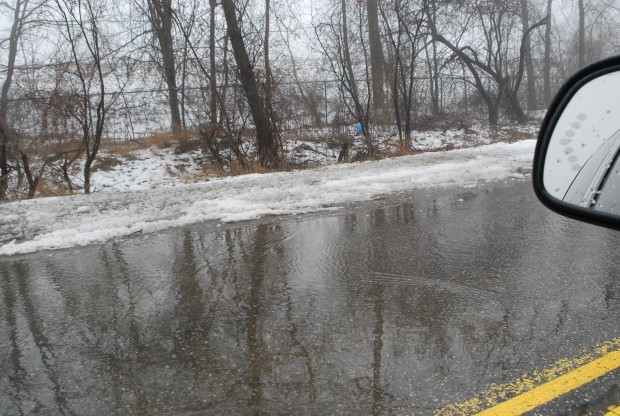
Michigan is in the middle of several days of rain. This in and of itself is not particularly remarkable, but for the fact that it is the end of January. Winter rain in zones where the ground freezes is just cause for alarm. Our frost is not so deep this year-15 inches down into the ground. Any amount of frozen ground means that rain will not be absorbed; 15 inches of frost means frozen. Todays rain will run to drains and sewers, or it will sit. As Thursday’s forecast calls for a daytime high of 25, any water not absorbed by a storm sewer system by then will freeze. This roadway between the shop and Branch will be a sheet of ice come Thursday, if this water has no place to drain.

The day has been spectacularly gloomy and foggy. The rain has been both steady, and heavy. Many roads are flooded. This picture was taken at Branch. The buildings there sit on 7 acres of land. This land is comprises of little rocks, big rocks, and a thin layer of compost. The landscape plants you see here are heeled in-above ground. There is not much point to digging into the rocky soil. Our landscape nursery sees lots of materials come and go. We heel in, above ground.

Our rocky property drains like crazy. In a hot summer, Steve has to watch and water our nursery stock daily. 7 days a week daily. The only rain water sitting today is the rain on the concrete. The land itself has no puddles. The compost piles should be thoroughly saturated by this heavy rain. Any water in the piles that freezes will expand. This expansion will move the compost-no harm in that. Nature will incorporate air into the compost.
Water that freezes in a pot that does not drain can prove very distructive. This Francesca del Re pot blew over in the 60mph winds we had last week. Though this frostproof pot is made from a clay that is loaded with minerals and grog, it broke. Sufficient wind and water give life. Extreme wind and water can spell disaster.
Winter rain is deadly to pots and sculpture that do not drain. Water that freezes expands. Nothing stops that expansion. Concrete sculptures can be shattered. Even the best handmade terra cotta pots will absorb water. Once that absorbed water freezes and expands, it can shatter a pot. Years ago I had a client with an antique cistern that she did not drain. Water that collected and froze in that cistern split the cast iron cistern open. Providing for good drainage is not just a summer issue. Anywhere water collects and sits is a recipe for trouble.
This cast stone urn on a plinth at the shop is not draining. Part of tomorrow’s work will be setting the water free. Lets say that the water was left to freeze in this urn. The shape of the urn is outfacing. This means that the water that expands as it freezes will have an outward and upward journey. I would guess the freezing process will not harm this urn. But any water that is trapped in a pot, or under a sculpture-the winter weather in Michigan could damage it.
It is pouring rain tonight! No end of ornament in the garden will collect that rain. Michigan gardeners-check out where water is collecting. Prepare for the freezing temperatures to come. If water that threatens to freeze threatens you, make a move. Drain the water away ahead of the freeze to come.
Rain in the winter-it can be beautiful. It can mean trouble. Pelting rain and fog in late January-nature at work.

